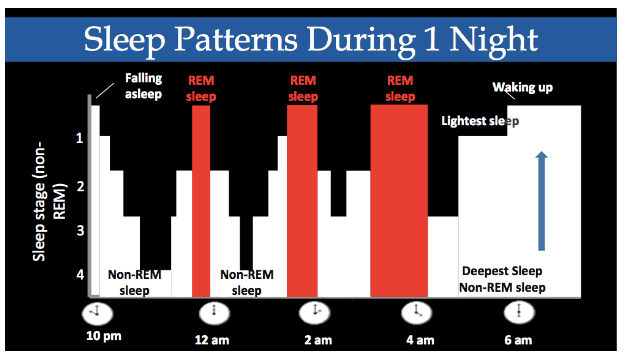Sleep Part I: What happens when we sleep?
Sleep Part I: What happens when we sleep?

Sleep is without doubt the most important part of the day and yet something many of us don’t give a second thought to. In this two part blog post we explore what happens to you when you sleep, what a good night’s sleep looks like and how you can achieve a great night sleep.
What happens when you sleep?
Every day the trillions of cells in our body move through two states – anabolism (building up) and catabolism (breaking down). Finding the balance between these two states is called homeostasis and is essential for good health. Sleep is our bodies opportunity to enter an anabolic state to rebuild and repair. It’s during sleep that our brain has the time to clear away toxic byproducts that otherwise would pile up and cause plaque. It’s also a time when our brains can sort the information we received that day and keep the important stuff while disposing of things less important.
But it doesn’t just stop with the brain. Sleep gives our digestive system a chance to rest and repair. During the day we are bombarding our liver with a whole heap of stuff it needs to detoxify, but come sleep time it has a chance to synthesise essential elements such as hormones and repair. Our breathing and heartbeat slows, allowing blood pressure to drop. Sleep gives our immune system a better chance at fighting illness. Interestingly a cancer killer called tumour necrosis factor (TNF) is also more active at night as we sleep. Our sex and fertility hormones are more active when we sleep. The list goes on and demonstrates how important sleep is to our health and rebuilding our bodies.
What is a good night’s sleep?
During the night we go through different stages of sleep, with each stage influencing our health in different ways. The first stage is non-rapid-eye-movement (NREM) sleep, which we are in for approximately 75% of the night. This is the stage where you begin to fall asleep, within it there are 4 different stages:
Stage 1: This is the lightest stage when you move from being awake to falling asleep.
Stage 2: During this stage you become disengaged with your surroundings. Breathing and heart rate is regular and body temperature drops (which is why being in a cool room is helpful).
Stage 3 and 4: This the deepest and more restorative sleep. Breathing slows, muscles relax and blood pressure drops. Blood supply to muscles increases, tissue growth and repair occurs, energy is restored and hormones are released (including growth hormone which is essential for growth and development – especially with muscles).
Stage 5 Rapid-eye-movement (REM) Sleep: This occurs for approximately 25% of the night and occurs about 90 minutes after falling asleep and then throughout the night every 90 minutes following. REM sleep provides energy to the brain and body, it supports daytime performance and switches the muscles off. The image below shows how our sleep changes throughout the night moving in and out of these cycles.



